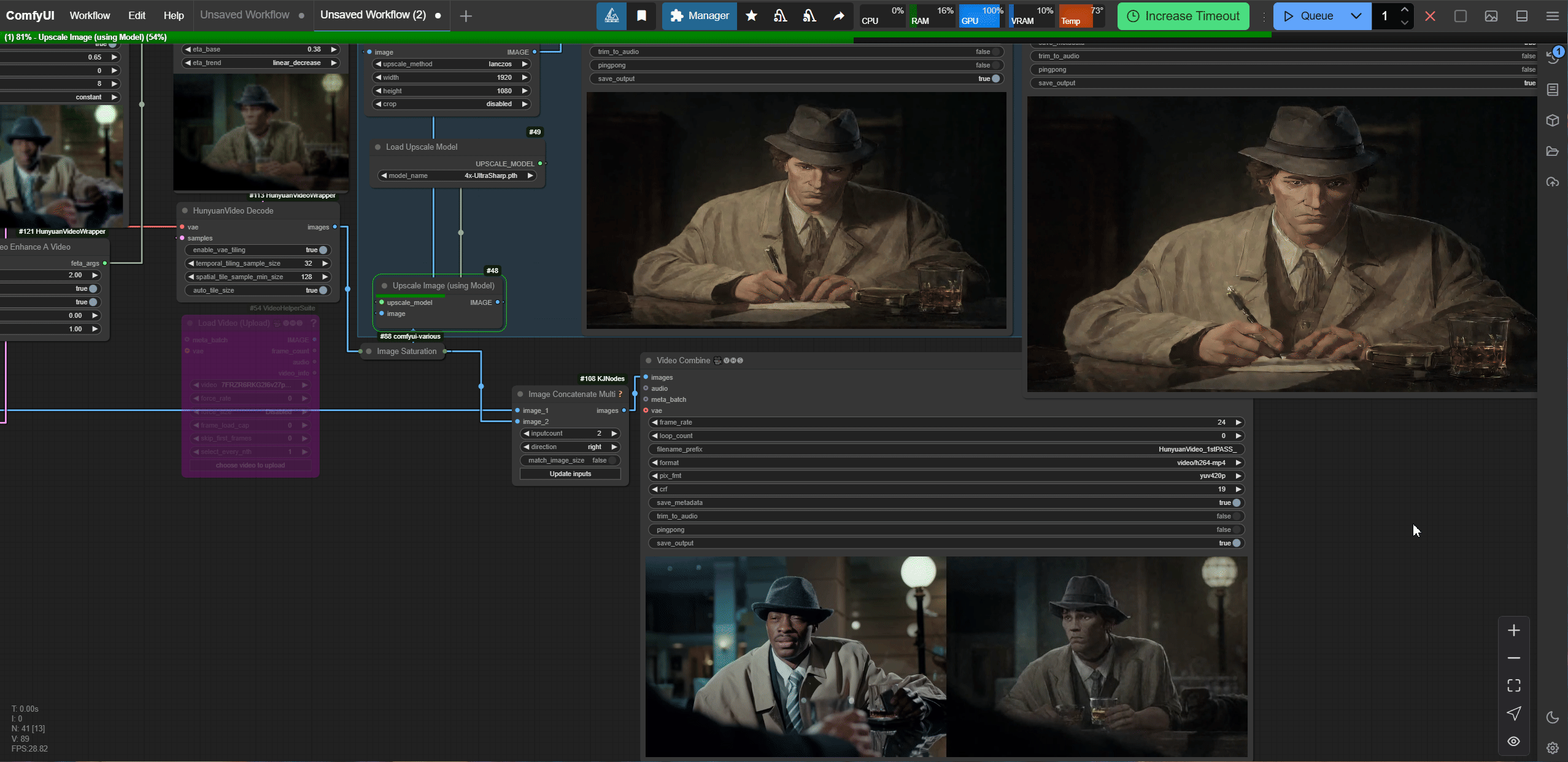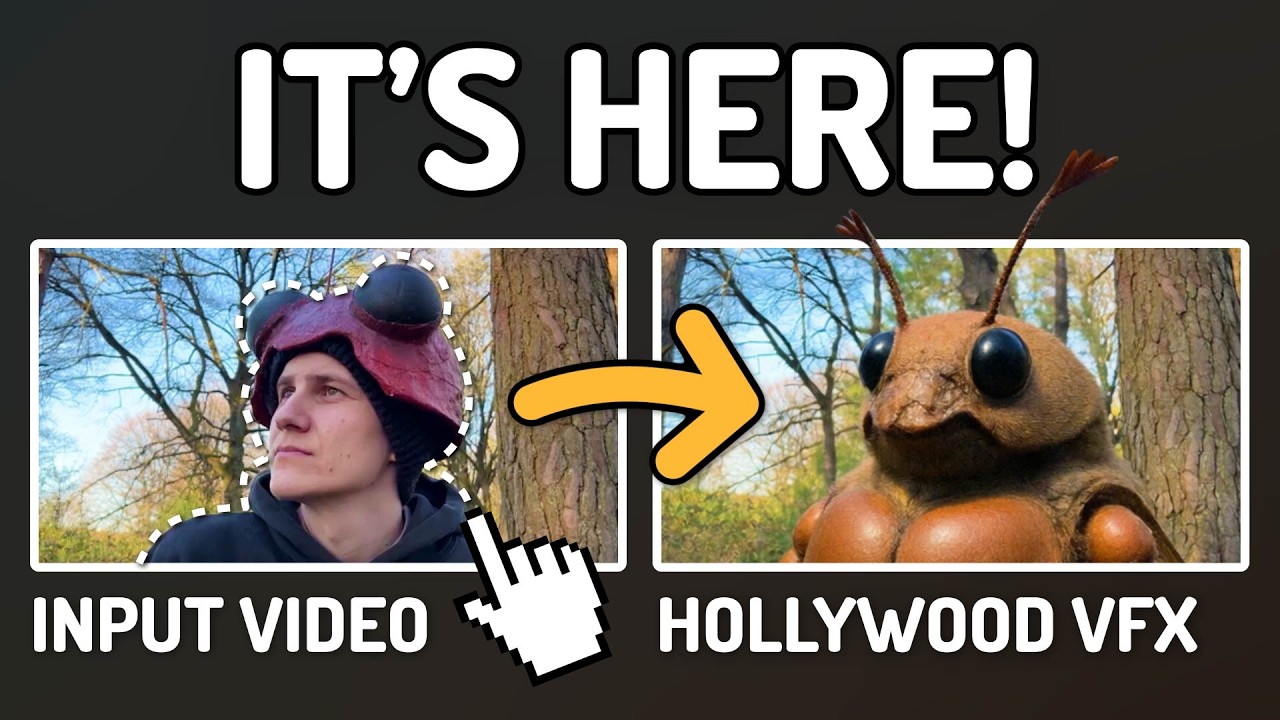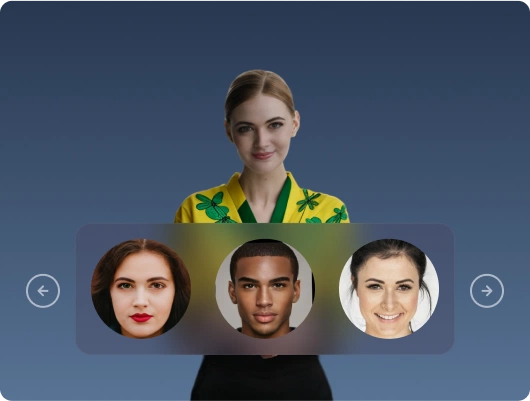Top 6 ComfyUI Text-to-Video Models: Performance Guide
Compare the top 6 text-to-video models for ComfyUI in 2025. Performance benchmarks, quality analysis, and recommendations for different hardware.

Have you ever imagined creating Hollywood-quality videos with just a text prompt? In 2025, this isn't science fiction it's Tuesday afternoon. The space of AI video generation has undergone a seismic shift, and what once required massive budgets can now be achieved on consumer-grade GPUs.
In this comprehensive guide, you'll discover the six most powerful text-to-video models integrated with ComfyUI, complete with performance benchmarks, VRAM requirements, and real-world applications. Whether you're creating viral social media clips, commercial advertisements, or exploring artistic frontiers, these models are reshaping video production forever. New to ComfyUI? Start with our first workflow guide before diving into video generation.
The Revolution in AI Video Generation: Why ComfyUI Changes Everything
ComfyUI's node-based architecture has democratized AI video creation like never before. Unlike traditional video editing software or complex command-line interfaces, ComfyUI transforms detailed workflows into intuitive visual processes that anyone can master.
The integration of these six models represents a watershed moment in content creation. Each brings unique strengths that cater to different aspects of video generation from real-time generation on modest hardware to cinema-quality outputs that rival professional productions.
1. Wan2.1: The Versatile Powerhouse
Overview and Architecture
Wan2.1, developed by Alibaba's WaveSpeed AI team and released in February 2025, stands as a proof to efficiency meeting excellence. Available in both 1.3B and 14B parameter configurations, this Apache 2.0-licensed model has quickly become the Swiss Army knife of video generation.
Key Specifications
| Specification | 1.3B Model | 14B Model |
|---|---|---|
| VRAM Required | 8.19GB | 26GB |
| Resolution | 480p | 720p native |
| Generation Speed | 4 min/5sec | 6 min/5sec |
| License | Apache 2.0 | Apache 2.0 |
Standout Features
Multilingual Text Generation: Wan2.1 breaks new ground as the first video model capable of generating both Chinese and English text within videos, opening doors for international content creators.
Image-to-Video Excellence: While many models struggle with maintaining consistency when transforming static images, Wan2.1 excels at preserving visual fidelity while adding natural, fluid motion.
Consumer GPU Compatibility: The 1.3B variant's sub-10GB VRAM requirement makes professional video generation accessible to creators using RTX 3060 or equivalent hardware. For VRAM optimization tips, see our low VRAM guide.
Performance Benchmarks
- Motion Quality Score: 8.5/10
- Prompt Adherence: 8/10
- Generation Speed: 9/10
- Hardware Efficiency: 10/10
Best Use Cases
- E-commerce product videos requiring quick turnaround
- Social media content for Instagram Reels and TikTok
- Educational animations with multilingual support
- Rapid prototyping for creative concepts
For automated batch video generation, check our ComfyUI automation guide.
For content creators looking to streamline their workflow even further, combining Wan2.1's capabilities with AI-powered content tools like Apatero.com can help generate compelling video descriptions, scripts, and social media captions that perfectly complement your visual content.
2. HunyuanVideo: The Professional's Choice
Overview and Architecture
Tencent's HunyuanVideo, with its massive 13 billion parameters, represents the pinnacle of open-source video generation technology. Released under Apache 2.0 license, it directly challenges commercial solutions and sets new standards for quality.
Key Specifications
| Feature | Specification |
|---|---|
| Parameters | 13B |
| VRAM Requirements | 20-26GB |
| Max Resolution | 1280x720 native |
| Generation Time | 10-15 min/5sec |
Standout Features
3D Variational Autoencoder: The sophisticated 3D VAE architecture ensures temporal coherence across frames, eliminating the flickering and morphing issues that plague lesser models.
Dual-Mode Prompt System: Combines precise control with artistic freedom through its MLLM text understanding, allowing creators to balance technical requirements with creative expression.
Cinema-Quality Output: Consistently produces videos with film-grade motion dynamics and professional visual fidelity that meet broadcast standards.
Performance Benchmarks
- Motion Quality Score: 9.5/10
- Prompt Adherence: 9/10
- Generation Speed: 6/10
- Visual Fidelity: 10/10
Advanced ComfyUI Workflow Tips
HunyuanVideo requires the EmptyHunyuanLatentVideo node for initialization. For optimal results:
- Use the llava_llama3_fp8_scaled text encoder
- Pair with clip_l.safetensors for enhanced prompt comprehension
- Structure prompts as: [Subject], [Action], [Scene], [Style], [Quality Requirements]
3. LTX-Video: Speed Meets Quality
The Real-Time Revolution
Lightricks' LTX-Video achieves what many thought impossible: real-time video generation on consumer hardware. This 2-billion-parameter DiT-based model generates videos faster than they can be watched, changing rapid content creation workflows.
Key Specifications
| Model Variant | VRAM | Speed | Resolution |
|---|---|---|---|
| Standard (2B) | 12GB min | 4 sec/5sec video | 768x512 @ 24fps |
| v0.9.8 (13B) | 24GB optimal | 6 sec/5sec video | 768x512 @ 24fps |
Breakthrough Features
The distilled variants require only 4-8 inference steps while maintaining quality, making them ideal for time-sensitive projects where speed is paramount.
Best Applications
- Live streaming overlays and real-time effects
- Rapid prototyping for video concepts
- Social media stories requiring quick turnaround
- Interactive installations and exhibitions
4. Mochi 1: The Motion Master
innovative Architecture
Genmo AI's Mochi 1 represents a 10-billion-parameter breakthrough in motion dynamics. Built on the novel Asymmetric Diffusion Transformer (AsymmDiT) architecture, it excels where others falter in creating believable, physics-accurate motion.
Technical Specifications
| Aspect | Specification |
|---|---|
| Parameters | 10B |
| VRAM (BF16) | 20GB |
| VRAM (FP8) | 16GB |
| Resolution | 480p @ 30fps |
What Sets Mochi 1 Apart
Superior Motion Dynamics: Excels at fluid movement and realistic physics simulation, including complex elements like water dynamics, fur rendering, and natural hair movement.
Asymmetric Architecture: The visual stream has 4x the parameters of the text stream, prioritizing visual quality where it matters most.
Optimization Strategies
5. Pyramid Flow: The Long-Form Specialist
Extended Storytelling Capabilities
Developed through collaboration between Kuaishou, Peking University, and Beijing University, Pyramid Flow specializes in what others can't generating coherent videos up to 10 seconds long.
Core Specifications
| Feature | Capability |
|---|---|
| Video Length | Up to 10 seconds |
| Resolution | 1280x768 max |
| VRAM | 10-12GB |
| Frame Rate | 24 fps |
Unique Advantages
The pyramidal processing structure optimizes both quality and computational efficiency through hierarchical processing, making it possible to maintain coherence across extended sequences.
Flow-Matching Technology ensures smooth transitions and temporal consistency critical for storytelling content that needs to maintain narrative flow.
Ideal Use Cases
- Storytelling content requiring longer sequences
- Tutorial videos and educational content
- space cinematography and travel videos
- Time-lapse visualizations
When creating educational or tutorial content with Pyramid Flow, consider using Apatero.com to generate comprehensive scripts and learning objectives that maximize the impact of your extended video sequences.
6. CogVideoX-5B: The Detail Champion
Precision Engineering
Zhipu AI's CogVideoX-5B uses a 5-billion-parameter architecture with 3D Causal VAE technology, delivering exceptional detail and semantic accuracy that makes it perfect for technical and scientific applications.
Technical Specifications
| Specification | Value |
|---|---|
| Parameters | 5B |
| VRAM Requirements | 13-16GB |
| Native Resolution | 720x480 |
| Compression | 4x temporal, 8x8 spatial |
Where CogVideoX-5B Excels
Performance Comparison Matrix
| Model | VRAM (Min) | Resolution | Speed | Motion Quality | Best For |
|---|---|---|---|---|---|
| Wan2.1 (1.3B) | 8GB | 480p | Fast | Good | Rapid prototyping |
| Wan2.1 (14B) | 26GB | 720p | Moderate | Excellent | Professional content |
| HunyuanVideo | 20GB | 720p | Slow | Outstanding | Cinema quality |
| LTX-Video | 12GB | 768x512 | Real-time | Good | Live generation |
| Mochi 1 | 16GB | 480p | Slow | Excellent | Physics simulation |
| Pyramid Flow | 12GB | 768p | Moderate | Good | Long-form content |
| CogVideoX-5B | 16GB | 720x480 | Slow | Very Good | Detailed scenes |
Choosing the Right Model: Your Decision Framework
For Beginners and Small Businesses
Start with Wan2.1 (1.3B) its low VRAM requirements and fast generation make it perfect for learning and quick iterations. The native ComfyUI support ensures a smooth onboarding experience.
For Professional Content Creators
HunyuanVideo delivers unmatched quality for commercial projects. Despite longer generation times, the cinema-grade output justifies the wait for high-stakes productions.
For Real-Time Applications
LTX-Video is unbeatable when speed matters. Perfect for live demonstrations, rapid prototyping, or when you need to generate multiple variations quickly.
For Complex Motion
Mochi 1 excels at realistic physics and natural movement. Choose this for projects requiring accurate motion dynamics or character animation.
Optimization Tips for Maximum Performance
VRAM Management Strategies
- Use Quantized Models: FP8 and INT8 versions reduce VRAM usage by 40-50% with minimal quality loss
- Enable VAE Tiling: Breaks encoding/decoding into chunks for systems with limited memory
- Implement CPU Offloading: Move inactive model components to system RAM during processing
Hardware Recommendations
- Entry Level (8-12GB VRAM): RTX 3060 12GB, RTX 4060 Ti 16GB
- Professional (24GB VRAM): RTX 4090, RTX 5090
- Enterprise (48GB+ VRAM): RTX 6000 Ada, A100, H100
Future-Proofing Your Video Generation Pipeline
Emerging Trends to Watch
The rapid evolution of these models suggests several exciting developments on the horizon:
- Higher Resolutions: 1080p and 4K generation becoming standard
- Longer Duration: 30-60 second generation capabilities
- Multi-Modal Integration: Combined audio-video generation
- Real-Time Editing: Live parameter adjustment during generation
Staying Current
To maximize your investment in AI video generation:
- Monitor model repositories for updates and optimizations
- Join ComfyUI communities for workflow sharing
- Experiment with model combinations for unique results
- Document successful prompts and settings for consistency
For those looking to scale their content production, combining these powerful video models with AI content generation platforms like Apatero.com creates a complete creative pipeline from ideation and scriptwriting to final video production.
Frequently Asked Questions
Which text-to-video model is best for beginners with limited VRAM?
LTX-Video is your best starting point, requiring only 8GB VRAM and generating videos in under 10 seconds. It's perfect for learning video generation concepts without expensive hardware. Once you understand workflows, you can upgrade to Wan2.1 (12GB VRAM) for better quality while maintaining reasonable generation times.
Can I use multiple video models together in one workflow?
Yes, but strategically. Common approaches include using LTX-Video for rapid prototyping, then upscaling with CogVideoX for final quality. Or use Wan2.1 for initial generation and Pyramid Flow for interpolation to extend clip length. Avoid running multiple models simultaneously as VRAM stacks - instead, chain them sequentially in your workflow.
How long does it actually take to generate a 5-second video clip?
Generation time varies dramatically by model: LTX-Video generates in 5-10 seconds (RTX 4090), Wan2.1 takes 2-4 minutes (RTX 4090), HunyuanVideo requires 8-15 minutes (RTX 4090), CogVideoX needs 6-12 minutes (RTX 4090), Mochi 1 takes 10-20 minutes (RTX 4090), and Pyramid Flow requires 5-8 minutes (RTX 4090). Consumer GPUs (RTX 3080/4080) add 40-60% to these times.
Which model produces the most realistic results for commercial use?
HunyuanVideo delivers cinema-quality realism with exceptional temporal consistency, making it ideal for commercial work where quality trumps speed. CogVideoX comes close with better prompt adherence. For commercial projects, budget 10-15 minutes per clip with HunyuanVideo and plan for multiple generation attempts to achieve perfect results.
Free ComfyUI Workflows
Find free, open-source ComfyUI workflows for techniques in this article. Open source is strong.
Do I need different prompts for different video models?
Absolutely. LTX-Video responds best to concise, direct prompts (10-20 words). Wan2.1 and HunyuanVideo excel with detailed, structured prompts including camera movements and lighting details (30-60 words). CogVideoX needs explicit temporal descriptions ("character starts walking, then turns left"). Mochi 1 performs best with photographic terminology. Tailor your prompting style to each model's training data.
Can these models generate realistic human faces and movements?
HunyuanVideo handles faces best with minimal artifacts and natural expressions. Wan2.1 produces good faces but occasional temporal inconsistencies. CogVideoX struggles with close-up faces but handles full-body movements well. Mochi 1 excels at photorealistic faces in static or slow-moving shots. LTX-Video and Pyramid Flow produce acceptable faces for wide shots but struggle with close-ups. For face-focused content, prioritize HunyuanVideo.
What VRAM do I realistically need for professional video generation work?
24GB VRAM (RTX 4090/A5000) is the professional baseline, enabling all six models at reasonable settings. 16GB VRAM (RTX 4080) works but requires optimization flags and limits maximum resolution/duration. 12GB VRAM restricts you to Wan2.1, LTX-Video, and highly optimized CogVideoX workflows. Below 12GB, you're limited to LTX-Video or cloud solutions.
How do I fix flickering and temporal inconsistency issues?
Lower your CFG scale (try 3.5-5.0 instead of 7.0+), increase generation steps (30+ for most models), use lower noise settings if available, enable temporal consistency features in models that support them, reduce frame rate for smoother motion, and ensure prompts don't include conflicting temporal descriptions. HunyuanVideo and CogVideoX have built-in temporal layers that reduce flickering compared to adapted image models.
Can I train these models on custom content or styles?
LoRA training is available for Wan2.1 and CogVideoX, enabling custom style adaptation with 50-200 training clips. HunyuanVideo supports fine-tuning but requires significant compute resources. LTX-Video, Mochi 1, and Pyramid Flow don't currently support practical custom training. For consistent custom styles, train a LoRA on Wan2.1 for best results with manageable hardware requirements.
What's the best workflow for creating 30-60 second videos?
Generate multiple 3-5 second clips with overlapping prompts for narrative continuity. Use Pyramid Flow to interpolate and extend clips. Employ video editing software for transitions between generated segments. Alternatively, use Wan2.1's multi-stage generation with keyframe conditioning to maintain consistency across longer sequences. Full 30-60 second single-generation remains impractical with current models - multi-clip workflows produce better results.
The Golden Age of AI Video Creation
The convergence of these six models with ComfyUI's intuitive interface has ushered in an remarkable era of creative possibility. Whether you're producing quick social media content with Wan2.1, crafting cinema-quality advertisements with HunyuanVideo, or exploring real-time generation with LTX-Video, the tools are now in your hands.
The key to success lies not in choosing a single "best" model, but in understanding each tool's strengths and matching them to your specific needs. Start with the model that aligns with your hardware capabilities and project requirements, then expand your toolkit as your skills and ambitions grow.
Ready to Get Started?
Download ComfyUI, choose your first model based on our recommendations, and join the revolution in AI video creation. The only limit is your imagination and with AI-powered content tools supporting your creative process, even that barrier is dissolving.
Further Reading
- ComfyUI Official Documentation
- Wan2.1 Model Repository
- HunyuanVideo Technical Paper
- Apatero.com - AI Content Generation
Advanced Video Generation Techniques
Moving beyond basic text-to-video generation, advanced techniques unlock the full potential of these models for professional content creation.
Image-to-Video Workflows
Transform static images into dynamic video content using these models' image conditioning capabilities.
Starting from reference images preserves specific visual elements while adding motion. Load your reference image through the appropriate conditioning nodes for each model. Wan2.1 and HunyuanVideo particularly excel at maintaining source image fidelity.
Motion guidance describes how the reference should animate rather than describing the full scene. Focus prompts on movement: "camera slowly pushing in," "subject turns head to the left," "fabric flowing in wind."
Preservation strength controls how much of the reference survives through generation. Higher strength maintains more visual consistency but may limit motion range. Lower strength allows more dramatic animation but risks losing reference details.
Multi-Shot Video Creation
Create longer coherent videos by generating multiple connected shots.
Shared visual elements maintain continuity across shots. Use the same character descriptions, color palettes, and environmental references. Some models support explicit frame conditioning for stronger continuity.
Want to skip the complexity? Apatero gives you professional AI results instantly with no technical setup required.
Transition planning determines how shots connect. Generate shots with overlapping content - the end of shot 1 matching the beginning of shot 2 - for smooth transitions.
Batch workflow efficiency generates all shots in sequence before reviewing. Plan your shot list, prompt each consistently, then review the complete sequence for coherence issues.
Video Upscaling and Enhancement
Post-process generated videos for improved final quality.
Spatial upscaling increases resolution beyond native generation. Apply ESRGAN or similar frame-by-frame after generation. Most models generate at 720p or below; upscaling to 1080p or 4K improves delivery quality.
Frame interpolation smooths motion by synthesizing intermediate frames. Generated video at 16-24 FPS benefits from interpolation to 30 or 60 FPS for smoother playback.
Color grading ensures consistent look across frames that AI generation may vary slightly. Apply uniform grading to the complete output for professional polish.
For comprehensive post-processing techniques, see our VRAM optimization guide which covers memory management during these intensive operations.
Model-Specific Advanced Usage
Each model has unique capabilities beyond basic generation that unlock advanced use cases.
Wan2.1 Advanced Features
Multilingual capability generates text in both Chinese and English within videos. Useful for international content or educational materials with on-screen text.
14B model advantages justify the higher VRAM cost for professional work. The quality improvement over 1.3B is substantial for client-facing deliverables.
Fine-tuning compatibility allows training custom styles or subjects on Wan2.1 base. Community LoRAs adapt the model to specific needs.
HunyuanVideo Professional Features
Extended duration generation produces longer coherent clips than other models. Plan for longer shots when using HunyuanVideo.
Cinema-quality motion reproduces camera movements faithfully. Use cinematography terminology in prompts: "dolly zoom," "rack focus," "tracking shot."
Batch rendering overnight makes HunyuanVideo practical despite long generation times. Queue multiple generations before leaving.
LTX-Video Real-Time Applications
Live preview of prompts enables interactive refinement impossible with slower models. Adjust prompts and see results in seconds.
Join 115 other course members
Create Your First Mega-Realistic AI Influencer in 51 Lessons
Create ultra-realistic AI influencers with lifelike skin details, professional selfies, and complex scenes. Get two complete courses in one bundle. ComfyUI Foundation to master the tech, and Fanvue Creator Academy to learn how to market yourself as an AI creator.
Streaming integration potential from real-time generation. Consider LTX-Video for live event or streaming applications.
Distilled variants balance speed and quality for different needs. Choose appropriate variant for your specific use case.
Troubleshooting Common Issues
Address common problems that affect video generation quality and reliability.
Motion Quality Issues
Jittery or inconsistent motion typically indicates insufficient temporal modeling or too few frames. Increase frame count if possible, or choose models with stronger temporal consistency (HunyuanVideo, Mochi).
Unnatural motion patterns suggest prompt issues. Describe natural movement patterns rather than impossible physics. AI models learn from real video and struggle with unnatural requests.
Motion not matching prompt can result from conflicting descriptions or overly complex prompts. Simplify to core motion concept and add detail only if base generation works.
Quality Degradation
Blurry output often indicates resolution mismatch or insufficient steps. Generate at native resolution and increase step count for detail.
Color banding or artifacts suggest precision issues or compression. Check model precision settings and output encoding quality.
Temporal flickering between frames indicates weak temporal modeling. Different models have varying temporal consistency; HunyuanVideo and CogVideoX handle this better than adapted image models.
Memory and Performance Problems
Out of memory errors require VRAM optimization. Reduce resolution, frame count, or use quantized models. See our VRAM optimization guide for comprehensive strategies.
Slow generation beyond expected times suggests CPU offloading or memory swapping. Verify GPU is fully used and not bottlenecked by VRAM.
Crashes during generation may indicate unstable custom nodes or driver issues. Update to latest stable versions and test isolated workflows.
Workflow Integration and Automation
Integrate video generation into larger production pipelines for efficiency.
Batch Generation Workflows
Prompt queuing generates multiple videos unattended. Prepare prompt lists and queue overnight for morning review.
Parameter sweeps test different settings automatically. Generate same prompt at different step counts, CFG values, or models to compare.
Output organization keeps generated content manageable. Use consistent naming with parameters encoded in filenames for easy identification.
Automated Post-Processing
Scripted pipelines apply consistent post-processing to all outputs. Upscaling, frame interpolation, and color grading happen automatically after generation.
Quality filtering automatically flags or sorts outputs by quality metrics. Review only promising generations manually.
Asset management integration catalogs generated content for future use. Metadata and tagging enable retrieval of useful clips later.
For foundational ComfyUI workflow skills that support these advanced techniques, start with our ComfyUI essential nodes guide.
Industry Applications and Use Cases
Different industries apply these text-to-video models for specific content needs.
Marketing and Advertising
Social media content at scale requires rapid generation of short-form video. LTX-Video and Wan2.1 enable daily content production that would be impractical with traditional production.
Product visualization shows products in dynamic contexts without physical shoots. Generate product videos for catalog or e-commerce applications.
Concept testing generates rough videos for focus groups or internal review before committing to full production. Fast iteration identifies winning concepts early.
Entertainment and Media
Previsualization generates rough scene videos for planning before principal photography. Directors visualize complex scenes without expensive previs crews.
Background content fills screens and environments in productions. Generate ambient video for displays, windows, or environmental detail.
Animation development tests character designs and movement styles. Iterate on visual concepts before committing to full animation production.
Education and Training
Instructional content visualization explains concepts with custom video illustrations. Generate exactly the visual example needed rather than searching stock footage.
Language learning benefits from multilingual text generation (Wan2.1) for vocabulary and reading content.
Process demonstrations show procedures or sequences that would be difficult to film. Generate idealized examples for teaching materials.
Future Outlook
The rapid evolution of text-to-video models suggests exciting near-term developments.
Quality Improvements
Higher resolution native generation will reach 1080p and eventually 4K. Better temporal consistency will eliminate flickering without post-processing. Improved motion dynamics will produce more natural and diverse movement.
Capability Expansion
Longer duration generation will enable minutes-long videos without stitching. Multi-modal control will combine text with audio, motion reference, and other inputs. Interactive generation will enable real-time manipulation and refinement.
Accessibility Gains
Lower VRAM requirements will bring advanced models to consumer hardware. Faster inference will make all models practical for interactive use. Better documentation and workflows will lower the learning curve.
These developments will democratize professional video production capabilities even further, making tools accessible today at the leading edge of consumer feasibility standard capability within a year or two.
For those beginning their AI video generation journey, our getting started with AI video generation guide provides essential foundations for understanding these powerful tools.
Ready to Create Your AI Influencer?
Join 115 students mastering ComfyUI and AI influencer marketing in our complete 51-lesson course.
Related Articles

AI Documentary Creation: Generate B-Roll from Script Automatically
Transform documentary production with AI-powered B-roll generation. From script to finished film with Runway Gen-4, Google Veo 3, and automated...

AI Music Videos: How Artists Are changing Production and Saving Thousands
Discover how musicians like Kanye West, A$AP Rocky, and independent artists are using AI video generation to create stunning music videos at 90% lower costs.

AI Video for E-Learning: Generate Instructional Content at Scale
Transform educational content creation with AI video generation. Synthesia, HeyGen, and advanced platforms for scalable, personalized e-learning videos in 2025.
.png)